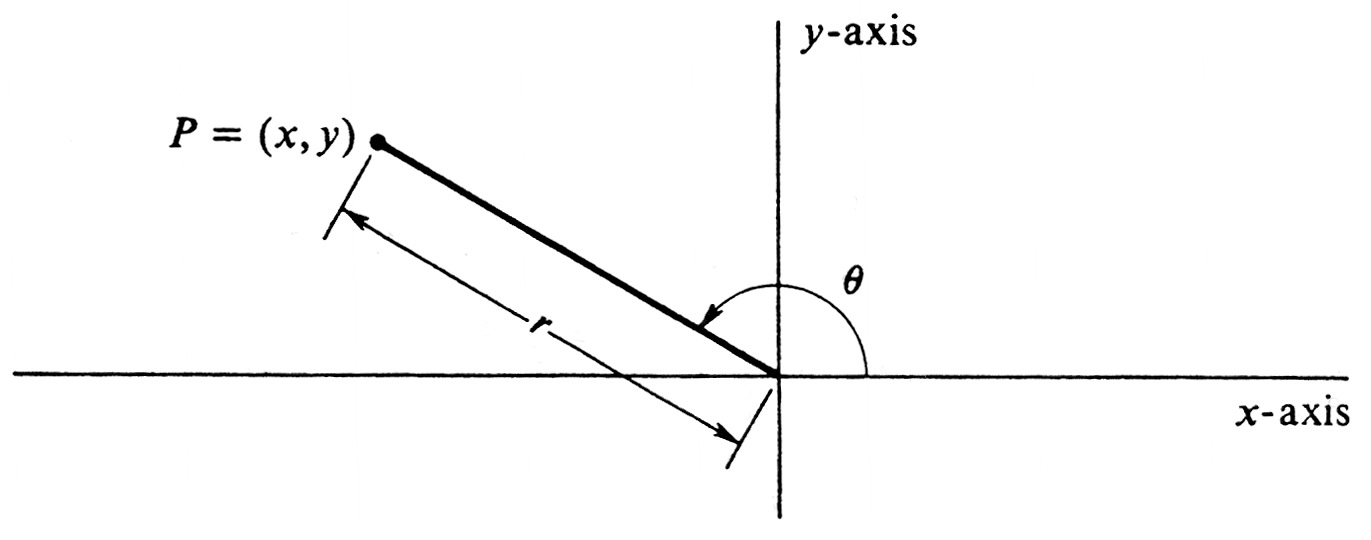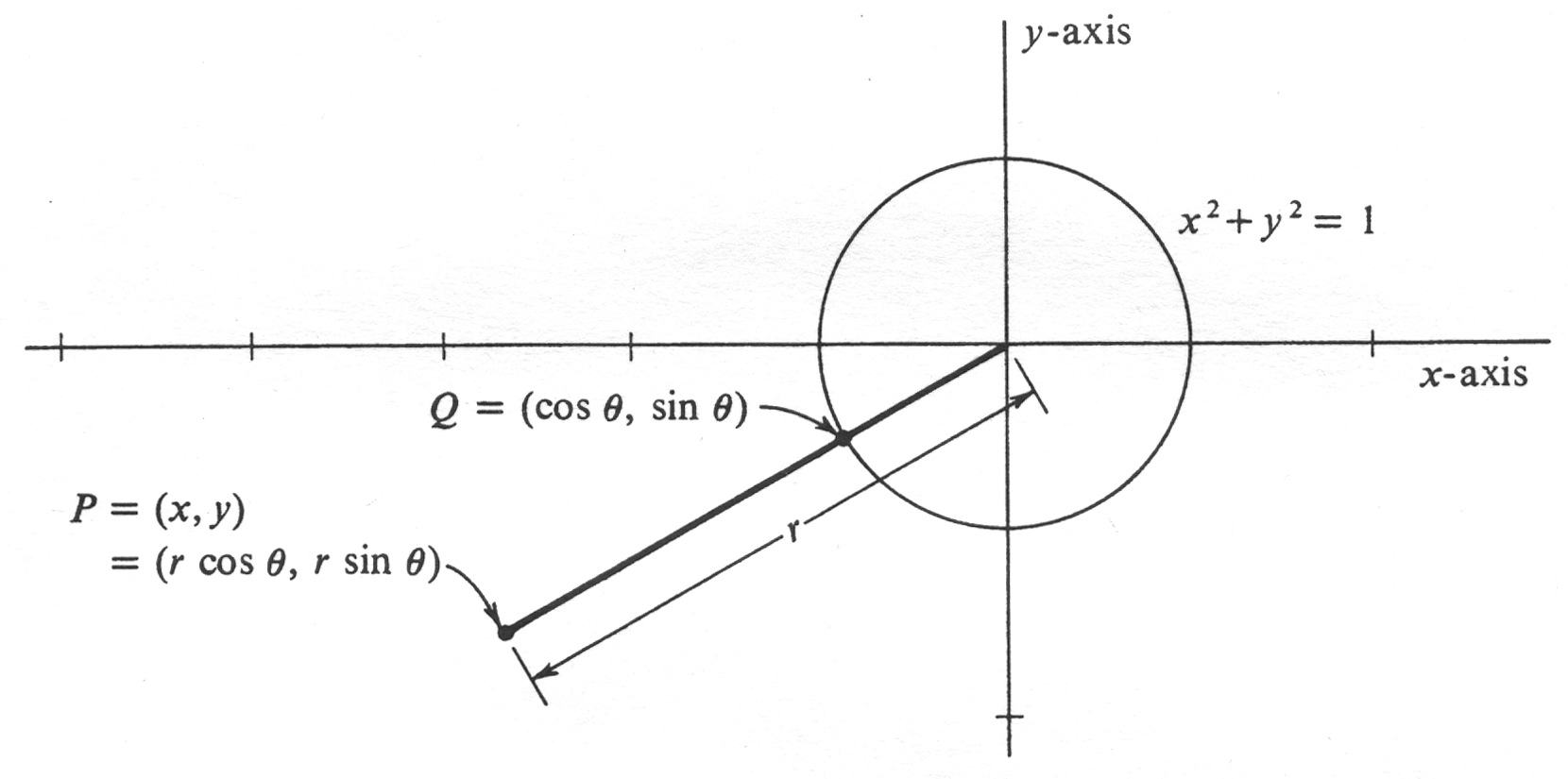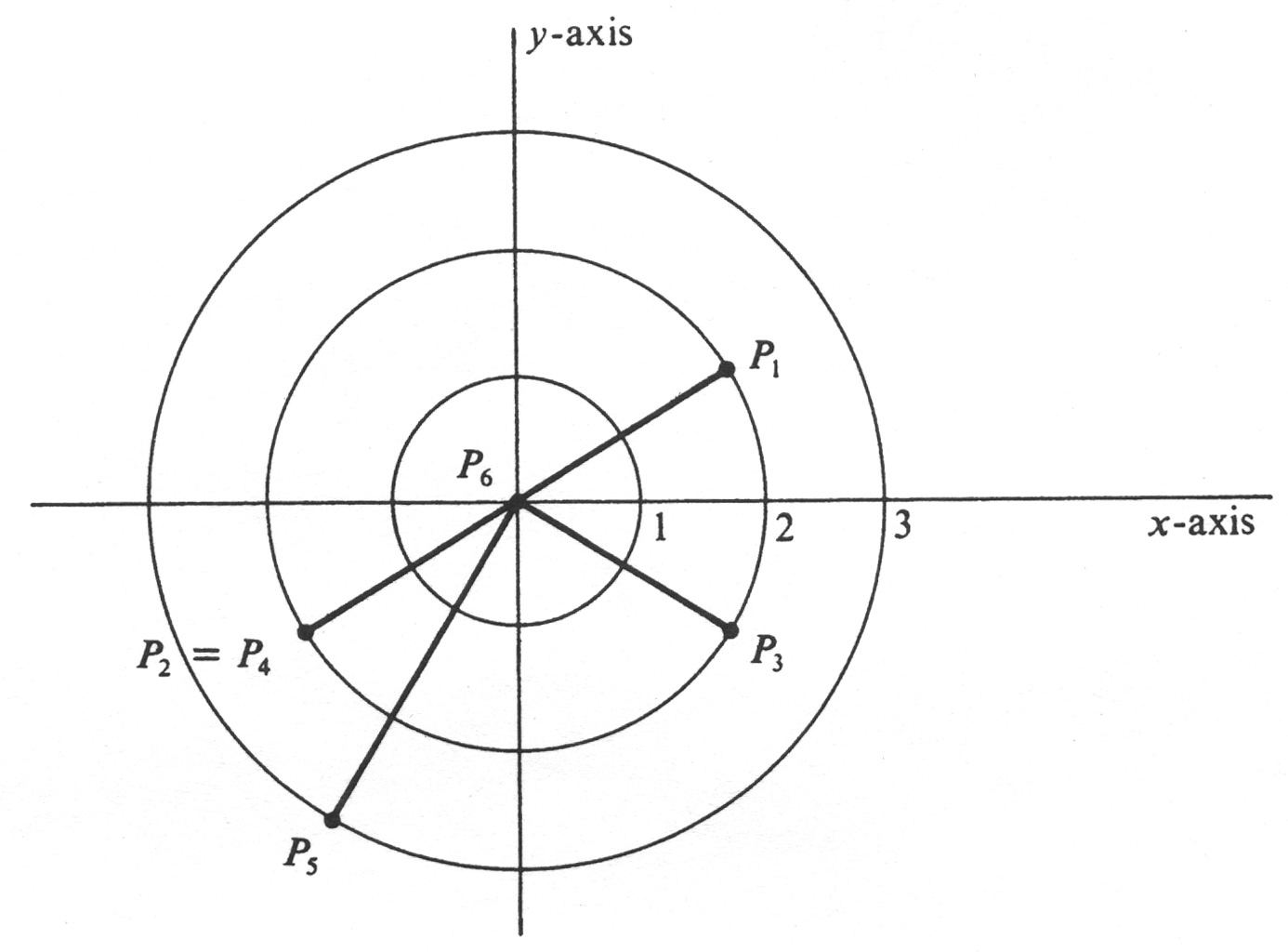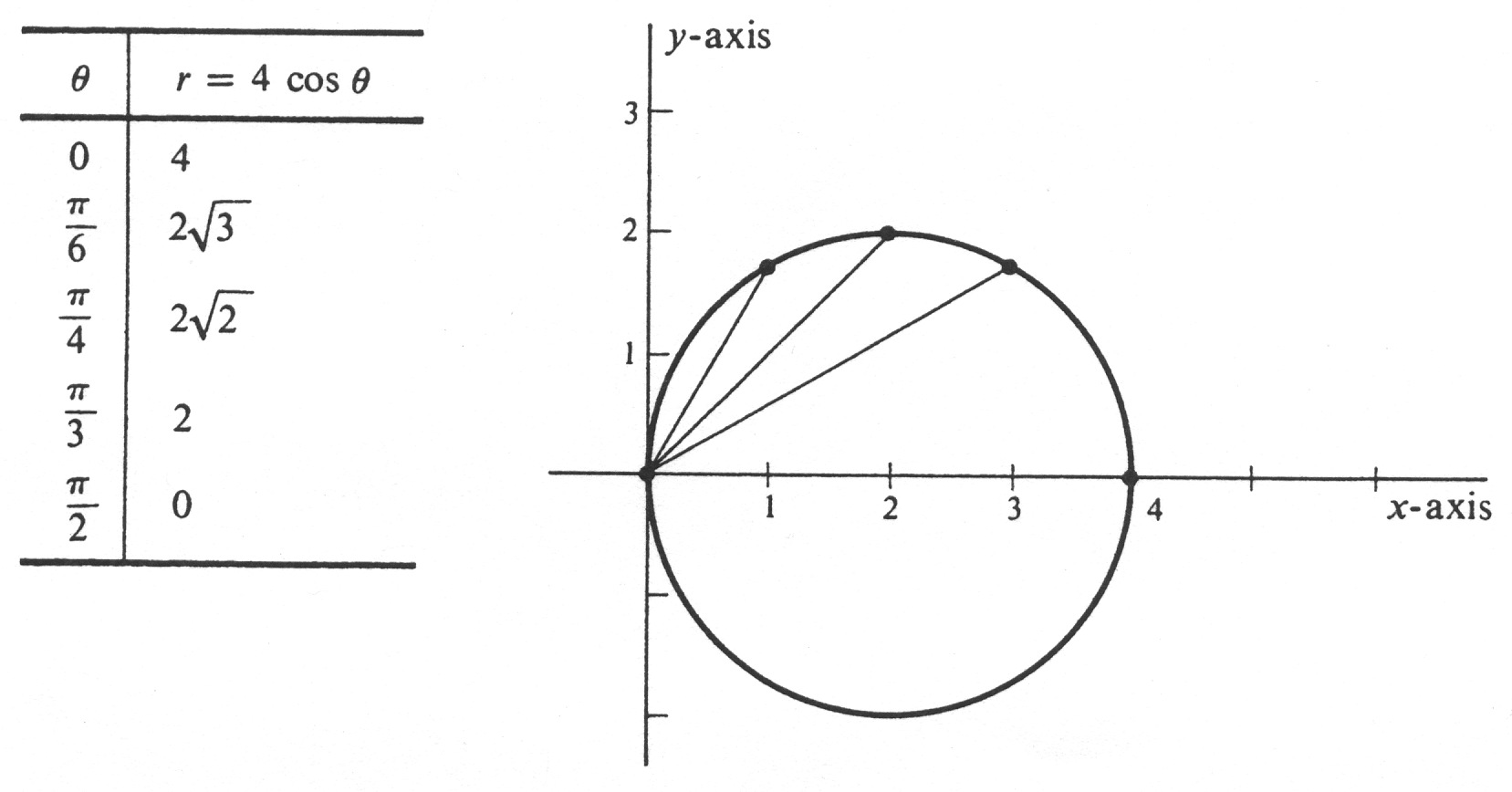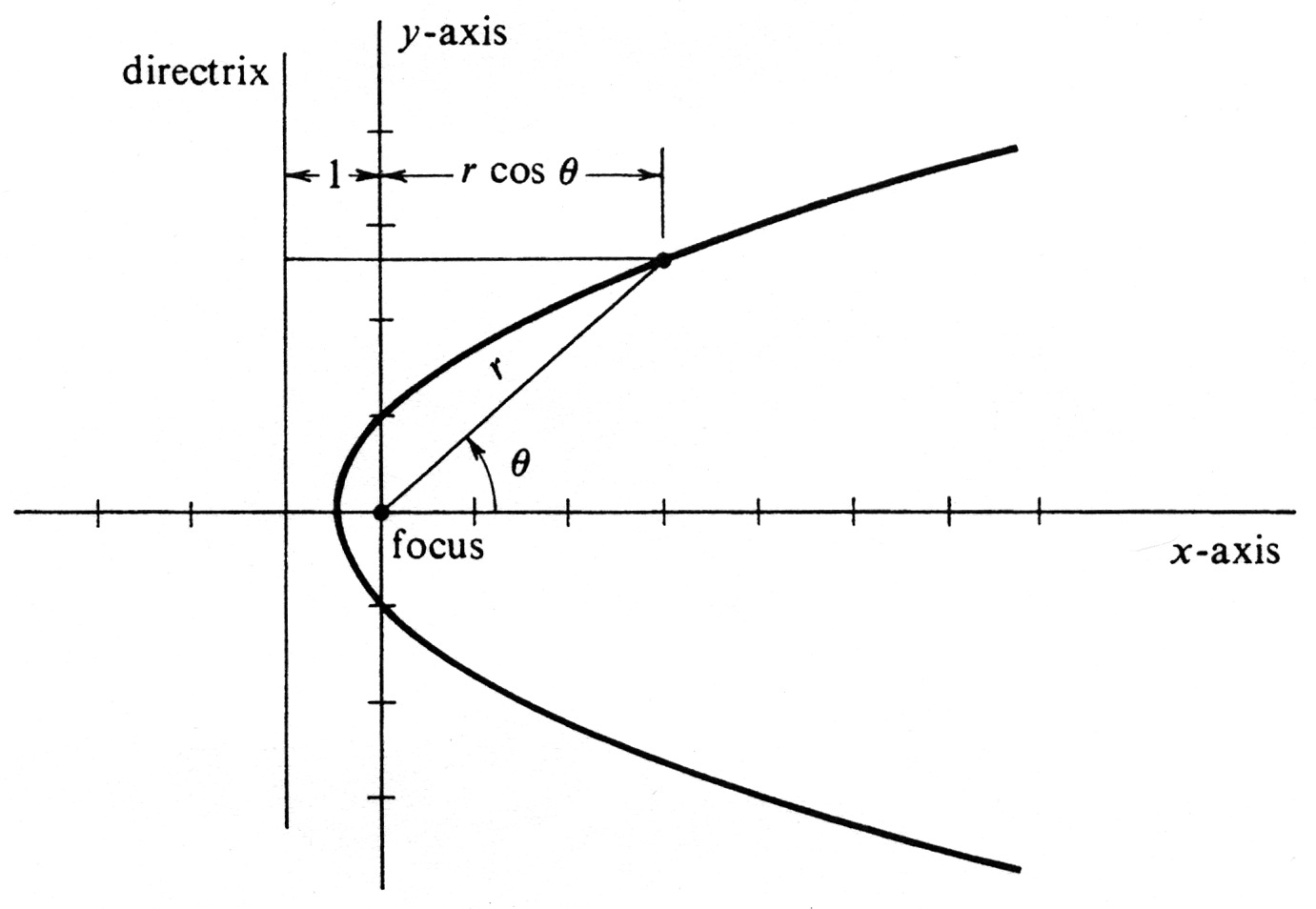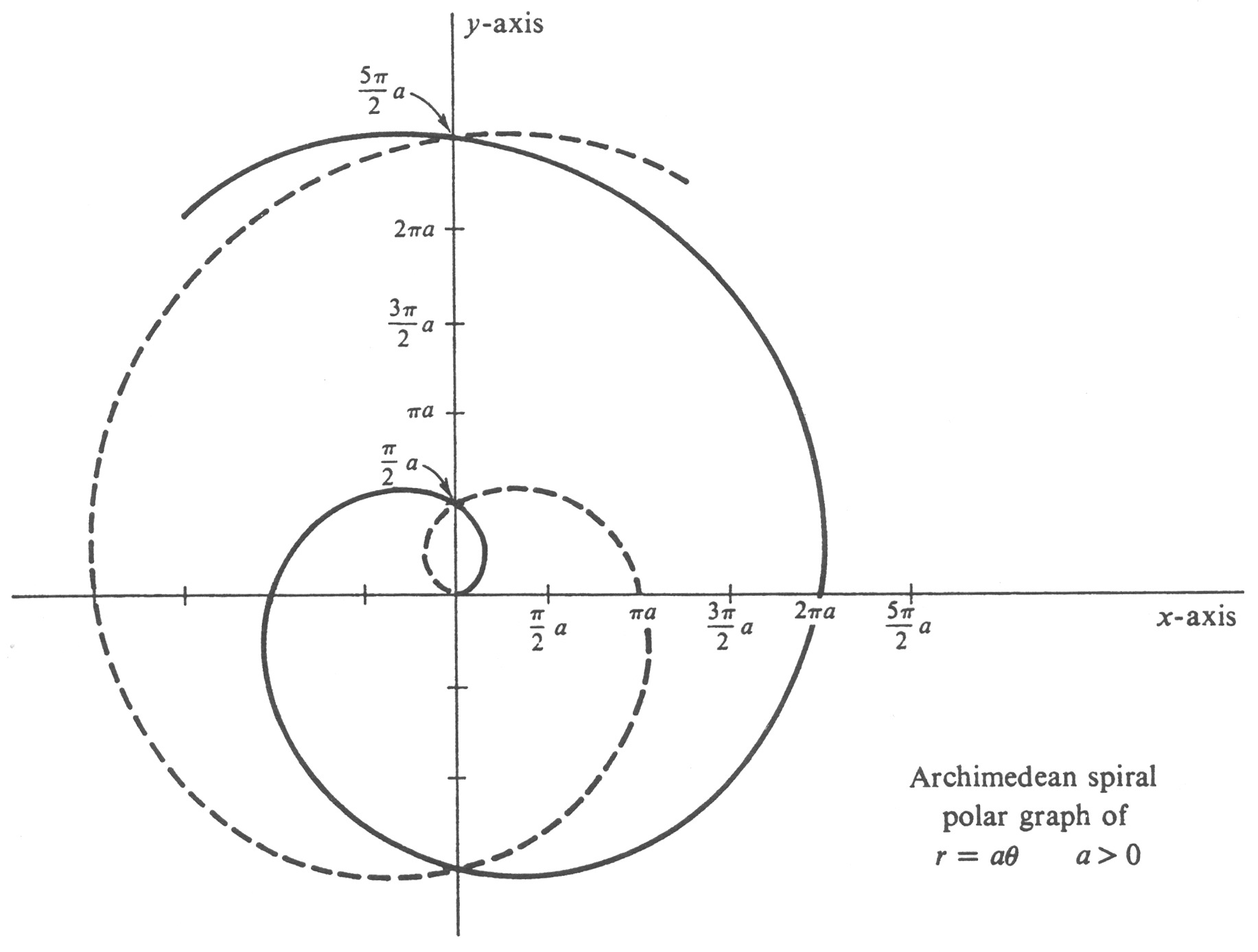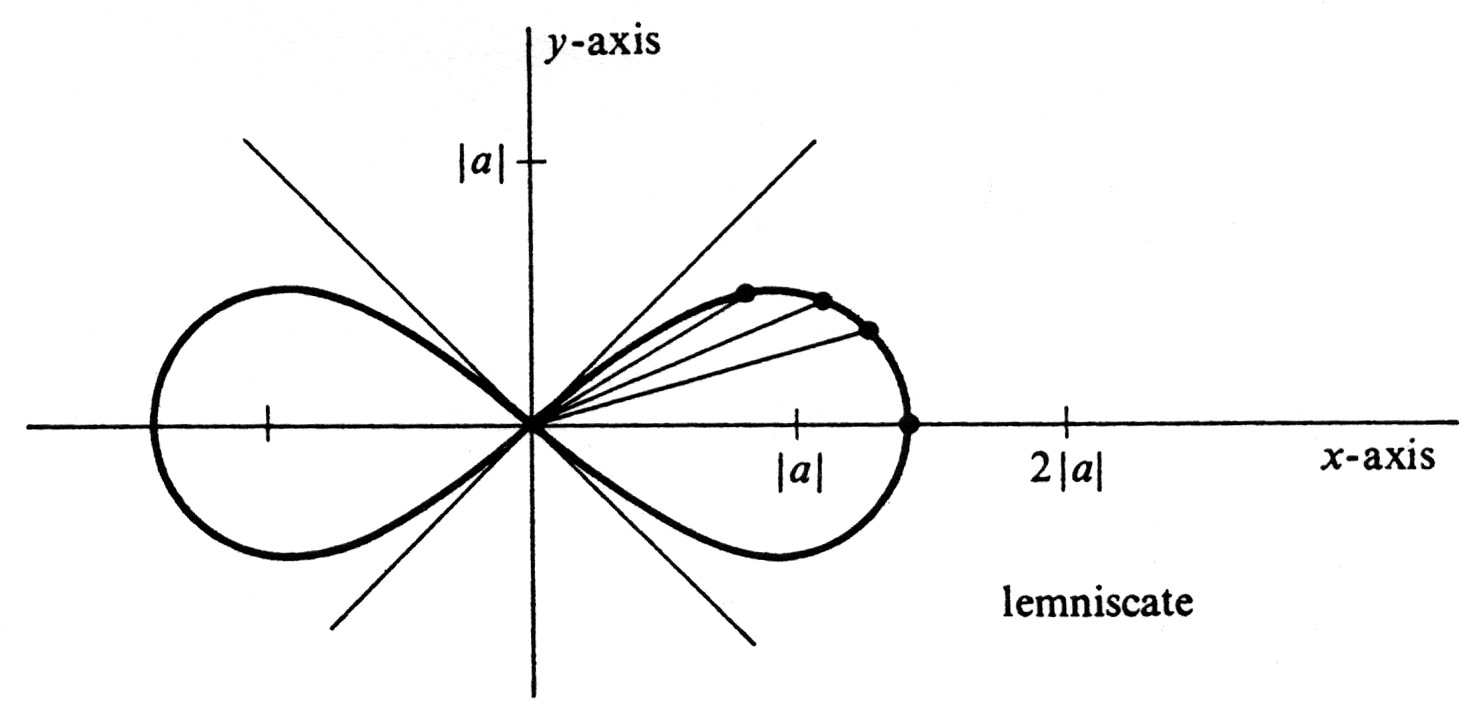guide:75bc735b57: Difference between revisions
mNo edit summary |
mNo edit summary |
||
| Line 363: | Line 363: | ||
{|class="table" | {|class="table" | ||
|- | |- | ||
|<math>\theta</math> || <math>r = \sqrt{2a^2 \cos{2\theta}}</math> || Approximate value | |<math>\theta</math> || <math>r = \sqrt{2a^2 \cos{2\theta}}</math> || Approximate value | ||
|- | |- | ||
|0 || <math>\sqrt2 \;|a|</math> || <math>1.4\;|a|</math> | |0 || <math>\sqrt2 \;|a|</math> || <math>1.4\;|a|</math> | ||
|- | |- | ||
|<math>\frac{\pi}{12}</math> || <math>\sqrt2 \;|a|\;\Bigl(\frac{\sqrt3}{2}\Bigr)^{1/2} = \sqrt[4]{3} \;|a|</math> || <math>1.3\;|a|</math> | |<math>\frac{\pi}{12}</math> || <math>\sqrt2 \;|a|\;\Bigl(\frac{\sqrt3}{2}\Bigr)^{1/2} = \sqrt[4]{3} \;|a|</math> || <math>1.3\;|a|</math> | ||
|- | |- | ||
|<math>\frac{\pi}{8}</math> || <math>\sqrt2 \;|a|\;\Bigl(\frac{\sqrt2}{2}\Bigr)^{1/2} = \sqrt[4]{2} \;|a|</math> || <math>1.2\;|a|</math> | |<math>\frac{\pi}{8}</math> || <math>\sqrt2 \;|a|\;\Bigl(\frac{\sqrt2}{2}\Bigr)^{1/2} = \sqrt[4]{2} \;|a|</math> || <math>1.2\;|a|</math> | ||
|- | |- | ||
|<math>\frac{\pi}{6}</math> || <math>\sqrt2 \;|a|\;(\frac{1}{2})^{1/2} = |a|</math> || <math>|a|</math> | |<math>\frac{\pi}{6}</math> || <math>\sqrt2 \;|a|\;(\frac{1}{2})^{1/2} = |a|</math> || <math>|a|</math> | ||
|- | |- | ||
|<math>\frac{\pi}{4}</math> || 0 || 0 | |<math>\frac{\pi}{4}</math> || 0 || 0 | ||
|} | |} | ||
==General references== | ==General references== | ||
{{cite web |title=Crowell and Slesnick’s Calculus with Analytic Geometry|url=https://math.dartmouth.edu/~doyle/docs/calc/calc.pdf |last=Doyle |first=Peter G.|date=2008 |access-date=Oct 29, 2024}} | {{cite web |title=Crowell and Slesnick’s Calculus with Analytic Geometry|url=https://math.dartmouth.edu/~doyle/docs/calc/calc.pdf |last=Doyle |first=Peter G.|date=2008 |access-date=Oct 29, 2024}} | ||
Revision as of 21:25, 21 November 2024
Since the set [math]R^2[/math] of all ordered pairs of real numbers has been identified with the set of all points in the plane, every point is uniquely determined by its [math]x[/math]- and [math]y[/math]-coordinates. An alternative way of specifying points in the plane is the following: To every ordered pair [math](r, \theta)[/math] of real numbers, we assign the point [math]P = (x, y)[/math] in [math]R^2[/math] defined by
The pair [math](r, \theta)[/math] is called a pair of polar coordinates of the point [math]P = (x, y)[/math]. In giving the geometric interpretation of polar coordinates of a point, we distinguish three separate possibilities: Case 1. [math]r \gt 0[/math]. Then [math]r[/math] is the distance between [math]P = (x, y)[/math] and the origin, since
The number [math]\theta[/math] is the radian measure of the angle which has its vertex at the origin, its initial side the positive [math]x[/math]-axis, and its terminal side the line segment joining the origin to [math]P[/math]. An example is shown in Figure 22.
Case 2. [math]r = 0[/math]. Then [math]P[/math] is the origin regardless of the value of [math]\theta[/math], since
Case 3. [math]r \lt 0[/math]. In this case the point [math]P = (x, y)[/math] is symmetric with respect to the origin to the point with polar coordinates [math](|r|, \theta)[/math]. This fact is illustrated in Figure 23. To prove it, we first observe that
In the present situation r is negative. Hence [math]-r[/math] is positive, and [math]|r| = -r[/math]. The preceding equations therefore imply
Thus
and this is precisely what is asserted above.
The major difference between polar coordinates and the familiar [math]x[/math]- and [math]y[/math]-coordinates is that if a given point [math]P = (x, y)[/math] has one pair of polar coordinates [math](r, \theta)[/math], then it has infinitely many: If [math]n[/math] is any integer, then
and it therefore follows that, for every integer [math]n[/math], the ordered pair [math](r, \theta + 2\pi n)[/math] is a pair of polar coordinates for the one point [math]P = (x, y) = (r \cos \theta, r \sin \theta)[/math]. In addition, as shown in Case 3, we have
Hence [math](-r, \theta + \pi)[/math] is also a pair of polar coordinates of [math]P[/math]. We conclude that there is no such thing as the polar coordinates of a point.
Of course, it is also important to realize that every point [math]P = (x, y)[/math] has at least one pair of polar coordinates (and thence infinitely many). This is not hard to show. We set [math]r = \sqrt{x^2 + y^2}[/math]. If [math]r = 0[/math], then [math]x = y = 0[/math] and [math]P[/math] is the origin. In this case, [math](r, \theta) = (0, \theta)[/math] is a pair of polar coordinates of [math]P[/math] for any choice of [math]\theta[/math]. If [math]r \gt 0[/math], then [math]P[/math] is not the origin, and we let [math]Q[/math] be the point on the unit circle (defined by [math]x^2 + y^2 = 1[/math]) which lies on the half-line emanating from the origin and passing through [math]P[/math] (see Figure 24). From our definition of the functions sine and cosine, we know that [math]Q = (\cos \theta, \sin \theta)[/math] for some number [math]\theta[/math]. It follows that
and so [math](r, \theta)[/math] is a pair of polar coordinates of [math]P[/math].
Example Determine the [math]x[/math]- and [math]y[/math]-coordinates of the points with the following polar coordinates, and plot the points in the plane.
If [math](r, \theta)[/math] is a pair of polar coordinates of a point [math]P[/math], then the [math]x[/math]- and [math]y[/math]-coordinates of [math]P[/math] are given by
We next study curves in the plane defined by equations in polar coordinates. Let [math]F[/math] be a real-valued function of two real variables. The set of all points in the plane whose polar coordinates satisfy the equation
Frequently, [math]r[/math] is explicitly defined as a function of [math]\theta[/math]. This means that there is a real-valued function [math]f[/math] of one real variable, and we consider the equation
The polar graph of this equation is that of the equation [math]r - f(\theta) = 0[/math], which is a special case of equation (2) in the preceding paragraph. It follows that the polar graph of [math]r = f (\theta)[/math] is the set of all points [math](x, y)[/math] such that
Example Identify and draw the curve defined by the equation
in rectangular coordinates. This equation is equivalent to
which is the same as
Example
A parabola is by definition the set of all points in the plane which are equidistant from a fixed line and a fixed point not on the line (see page 136). The line is called the directrix, and the point the focus. Find an equation in polar coordinates of the parabola whose focus is the origin and whose directrix is the vertical line cutting the [math]x[/math]-axis in the point (-1, 0). The parabola is drawn in Figure 27. An equation of a curve in polar coordinates means an equation [math]F(r, \theta) = 0[/math] whose polar graph is the given curve. In the present example, let [math](r, \theta)[/math], with [math]r \gt 0[/math], be a pair of polar coordinates of an arbitrary point on the parabola. Then [math]r[/math] is the distance from the point to the focus, and, as can be seen from the figure, the distance from the point to the directrix is [math]1 + r \cos \theta[/math]. Hence the geometric condition which defines the parabola is expressed in polar coordinates by the equation
Conversely, if [math]r[/math] and [math]\theta[/math] satisfy equation (7), it is clear that they are the polar coordinates of a point which satisfies the conditions for Iying on the parabola.
Example Draw the curve defined by the equation
for every real number [math]\theta[/math]. Since the functions cosine and sine are, respectively, even and odd, we obtain
It follows that the point [math]P(-\theta) = (-x(\theta), y(\theta))[/math] is situated symmetrically across the [math]y[/math]-axis from the point [math]P(\theta) = (x(\theta), y(\theta))[/math], and thus the curve is symmetric about the [math]y[/math]-axis.
Example Draw the curve, called a lemniscate, defined by the equation
| [math]\theta[/math] | [math]r = \sqrt{2a^2 \cos{2\theta}}[/math] | Approximate value |
| 0 | [math]\sqrt2 \;|a|[/math] | [math]1.4\;|a|[/math] |
| [math]\frac{\pi}{12}[/math] | [math]\sqrt2 \;|a|\;\Bigl(\frac{\sqrt3}{2}\Bigr)^{1/2} = \sqrt[4]{3} \;|a|[/math] | [math]1.3\;|a|[/math] |
| [math]\frac{\pi}{8}[/math] | [math]\sqrt2 \;|a|\;\Bigl(\frac{\sqrt2}{2}\Bigr)^{1/2} = \sqrt[4]{2} \;|a|[/math] | [math]1.2\;|a|[/math] |
| [math]\frac{\pi}{6}[/math] | [math]\sqrt2 \;|a|\;(\frac{1}{2})^{1/2} = |a|[/math] | [math]|a|[/math] |
| [math]\frac{\pi}{4}[/math] | 0 | 0 |
General references
Doyle, Peter G. (2008). "Crowell and Slesnick's Calculus with Analytic Geometry" (PDF). Retrieved Oct 29, 2024.
